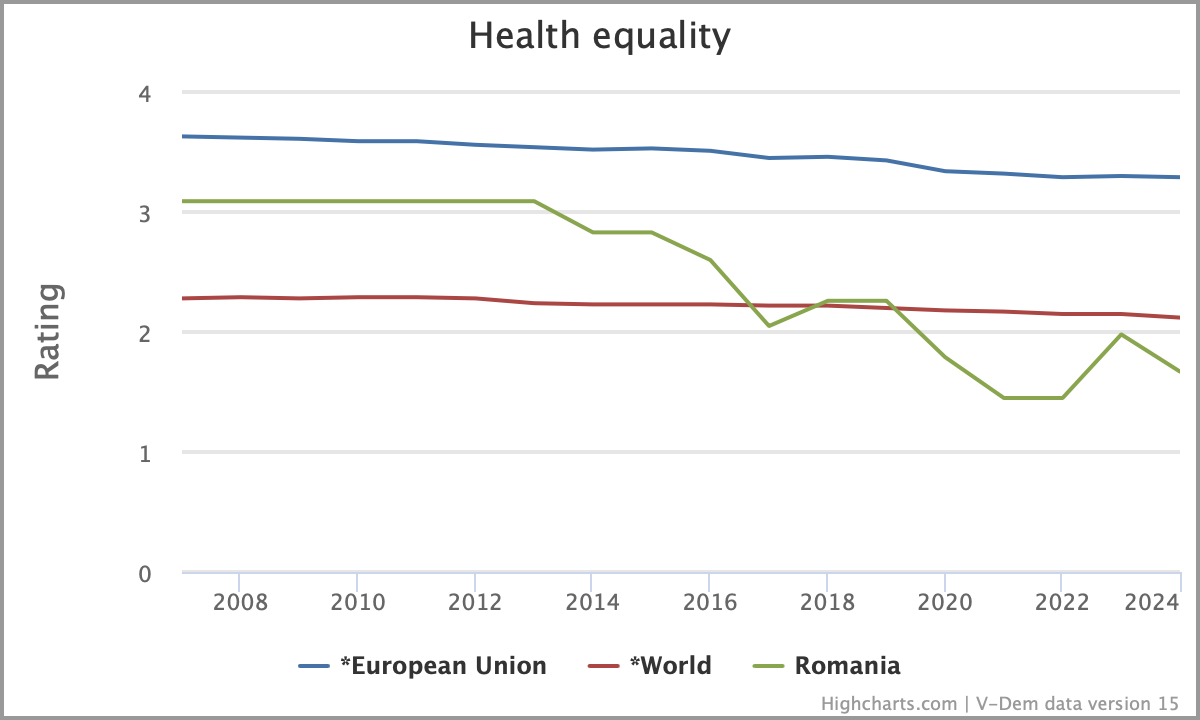Health Inequality in Romania, 2007-2024
By: Eugenio Truffa
Apr 15, 2025
International Health Day was celebrated on April 7. This week’s graph shows the level of health equality in Romania from 2007 – the year Romania joined the European Union – to 2024.
This variable shows the extent to which high quality basic healthcare is guaranteed to all citizens, sufficient to enable them to exercise their basic political rights. By failing to adequately treat preventable and treatable illnesses, poor-quality healthcare can make citizens unable to participate in social or political organizations, or to vote.
The variable scale ranges from 0 to 4, where 0 means that at least 75% of citizens are unable to fully exercise their political rights, and 4 meaning that less than 5% of citizens are unable to do so.
Romania stands out with substantially worse health inequalities than the EU average after a sharp decline since 2013. Romania now places lower than the world average. Its rating below 2 indicates that between 10 to 25 percent of citizens’ ability to exercise their political rights is undermined by health inequalities.
Romania’s spending on health care per capita and as a share of GDP per capita is less than any other EU country. Inequalities in access to services affect the rural populations and people without an identity card, such as the Roma population, disproportionately. In addition, the number of doctors and nurses among the lowest in Europe, many of whom decide to migrate.
Health inequality has potential negative consequences on the exercise of political rights for citizens. The functioning of democracy in Romania may suffer from these health inequalities.


